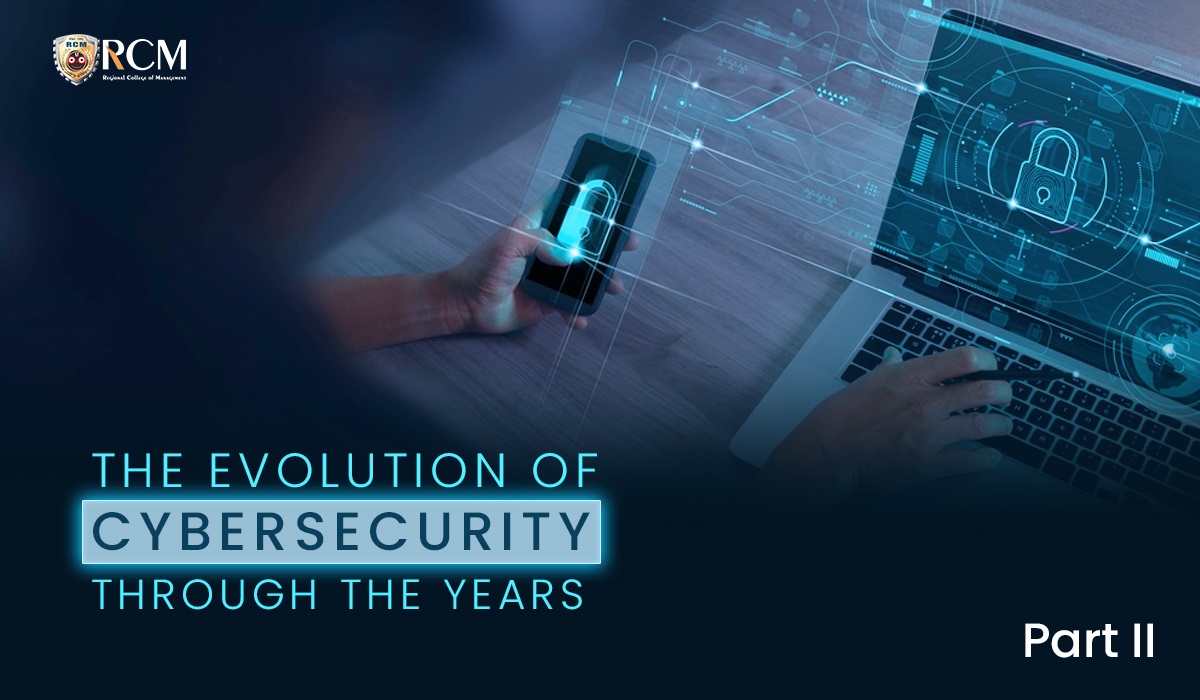In our previous blog, we saw how cybersecurity as a concept has emerged from its origin. Since this blog will be the continuation of the second, we are going to see the further growth that has taken place within the cybersecurity evolution over time.
The Cyber Age Began In The 1970s: ARPANET And The Creeper

The birth of cybersecurity took place in the 1970s when the researcher Bob Thomas established a computer programme called the “Creeper” that had the potential to glide across ARPANET’s network and leave a breadcrumb trail wherever it got directed.
However, it was Ray Tomlinson, the inventor of email, who wrote the programme Reaper that chased and deleted creepers. Reaper was the first example of antivirus software, as well as the first self-replicating program. Therefore, it was the first computer worm, marking a significant moment in cybersecurity evolution.
Moving Forward In The Timeline, In 1980: The Birth of The Commercial Antivirus

Despite opposing appeals for the visionary of the antivirus product, the year 1987 saw the birth of commercial antivirus. In 1987, Andreas Lüning and Kai Figge released Ultimate Virus Killer as well as their first antivirus programme for the Atari ST. The first version of the NOD antivirus was developed by three Czechoslovaks in the same year. In the same year, John McAfee launched McAfee in the US and made VirusScan available, signaling a new stage in the cybersecurity evolution.
1990, 2000, 2021: The Entire World Uses The Internet
More people started posting their personal information online as the internet became more widely used. Organized crime groups saw it as a promising source of income. They began stealing data online from citizens and the government. By the middle of the 1990s, network security threats had grown exponentially. This necessitated the mass production of firewalls and antivirus software to safeguard users. This period saw significant advancements in cybersecurity evolution.
Threats Evolve And Grow In Number

Beginning in the early 2000s, organized crime groups began to heavily invest in funding professional cyberattacks. Concurrently, governments started to crack down on the illegality of hacking by handing out much harsher punishments to those responsible. Sadly, viruses also grew in number as the internet expanded. Therefore, information security continued to advance. As a result, the cybersecurity evolution continued to progress in response to these growing threats.
Future Generations
The cyber security market is still expanding at a breakneck pace. According to Statista, the size of the global cybersecurity market is expected to increase to $345.4 billion by 2026. Ransomware is one of the most common threats to any organization’s data security, and its prevalence is expected to grow in the future.
As we look toward the future, the only thing we can be sure of is that we will continue to integrate cyberspace into our daily lives. We have a plethora of smart devices in our homes, and applications on our phones that can track and record our movements. It is difficult to think of a single aspect of society that will not eventually be reliant on the internet. The cybersecurity evolution will thus be an ongoing process to ensure our safety.
Naturally, hackers won’t disappear, and the current rivalry will continue. The Tom and Jerry game that Creeper and Reaper started more than 50 years ago is still going on all around us. This constant battle is a core part of cybersecurity evolution.




















